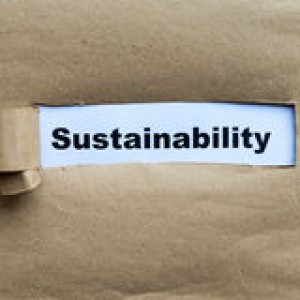News
Hershey makes sustainable cocoa progress
9 Apr 2015Hershey has announced that it will source enough certified and sustainable cocoa in 2016 to surpass the amount of cocoa required for the global production of four of its most popular chocolate brands. In addition, Hershey has also pledged that it will source enough certified and sustainable cocoa to add the global Reese’s brand and […]

 Hershey has announced that it will source enough certified and sustainable cocoa in 2016 to surpass the amount of cocoa required for the global production of four of its most popular chocolate brands.
Hershey has announced that it will source enough certified and sustainable cocoa in 2016 to surpass the amount of cocoa required for the global production of four of its most popular chocolate brands.
In addition, Hershey has also pledged that it will source enough certified and sustainable cocoa to add the global Reese’s brand and others to these first four brands in 2017.
According to Hershey, reaching this important responsible sourcing milestone was possible because of the company’s accelerated progress in sourcing cocoa from certified and sustainable cocoa farms. Earlier this year, Hershey set a new target to source at least 50% of its global cocoa supply from certified and sustainable sources by the end of 2015, a full year ahead of its original schedule. Hershey has committed to source 100% certified and sustainable cocoa by 2020.
“We are proud of our work to improve the lives of cocoa families, promote gender equality, and provide health and farm safety programs,” said Terry O’Day, Senior Vice President and Chief Supply Chain Officer. “While sustainable, certified cocoa is just part of our responsible sourcing efforts, the fact that we will source enough for these major Hershey brands in the fourth year of our certified cocoa commitment demonstrates the urgency with which we have pursued this commitment.”
Hershey sources certified cocoa through some of the world’s largest and most recognised cocoa certification organisations.
A key part of Hershey’s sustainable cocoa initiatives is its signature Hershey Learn to Grow farm training program in West Africa, the company said, where about two-thirds of the world’s cocoa is grown. During the past two years, Hershey has expanded Learn to Grow in Ghana, Nigeria and Cote d’Ivoire. Through the program, farmers receive training on good agricultural practices, appropriate social practices with a focus on labour, good environmental and business practices, and information about other food crops such as cassava and plantain.
Since starting Learn to Grow in 2012, Hershey and its local non-profit partner, Source Trust, have provided training for more than 5,000 Ghanaian farmers. The partners expect to register an additional 3,000 Learn to Grow farmers in Ghana in 2015, with a goal of supporting farm families by doubling cocoa yields per farm and increasing household income by 30% over five growing seasons. By 2019, Hershey expects to train more than 60,000 West African cocoa farmers through Learn to Grow, including 23,000 farmers in Ghana. About one-third of Learn to Grow farmers in Ghana and Nigeria are women, reflecting Hershey’s commitment to bring more economic opportunity to women inWest Africa.
Hershey’s sustainable cocoa programs are aligned with CocoaAction, the broader cocoa industry efforts to improve productivity and community livelihoods across the cocoa-growing sector in Ghana and Cote d’Ivoire. Hershey is a founding member of CocoaAction.
